Abstract
The behavior of pigeons on six geometrically spaced fixed-interval schedules ranging from 16 to 512 sec is described as a two-state process. In the first state, which begins immediately after reinforcement, response rate is low and constant. At some variable time after reinforcement there is an abrupt transition to a high and approximately constant rate. The point of rapid transition occurs, on the average, at about two-thirds of the way through the interval. Response rate in the second state is an increasing, negatively accelerated function of rate of reinforcement in the second state.
Full text
PDF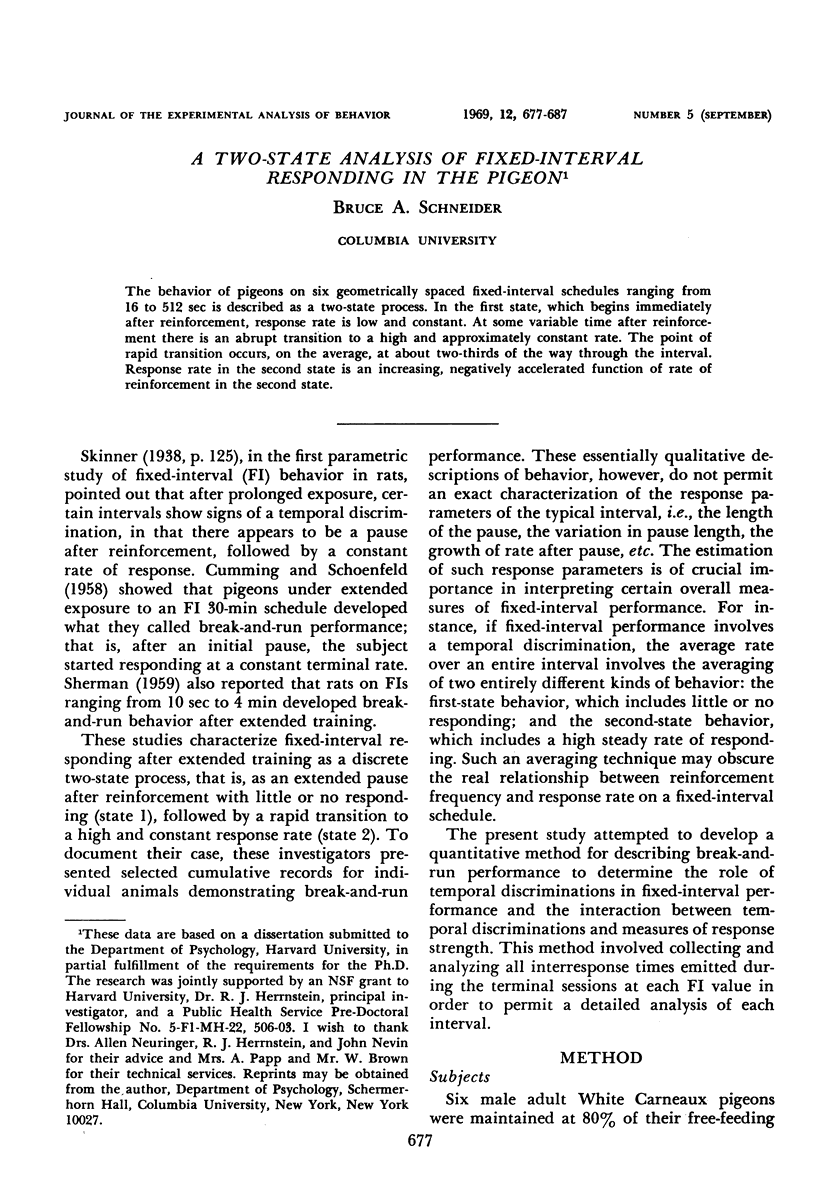


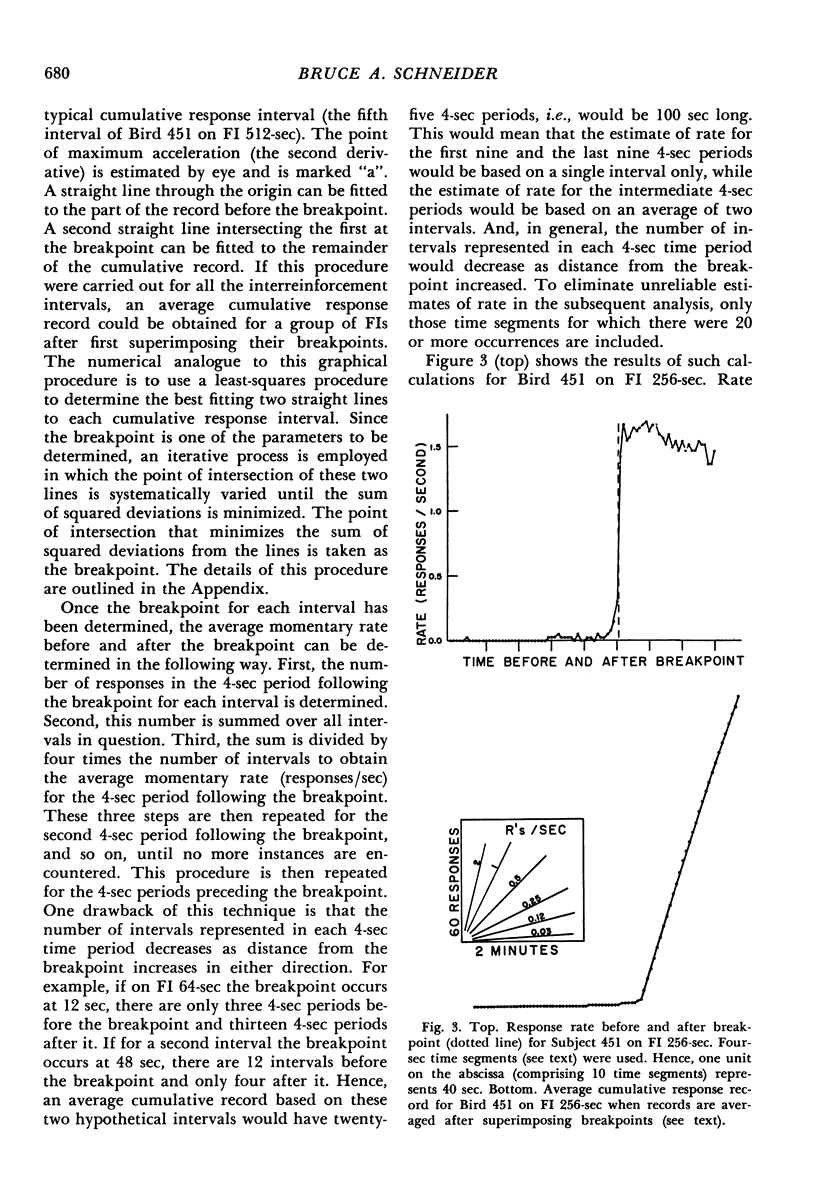
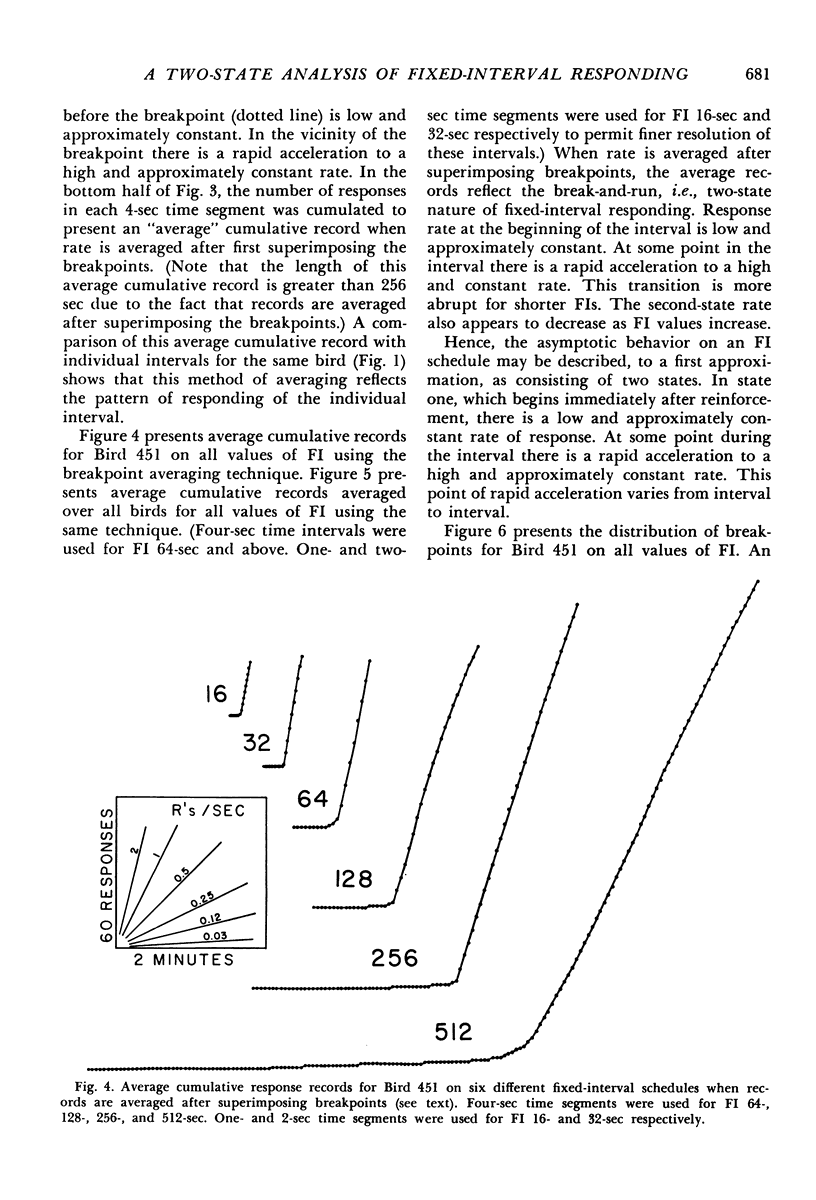

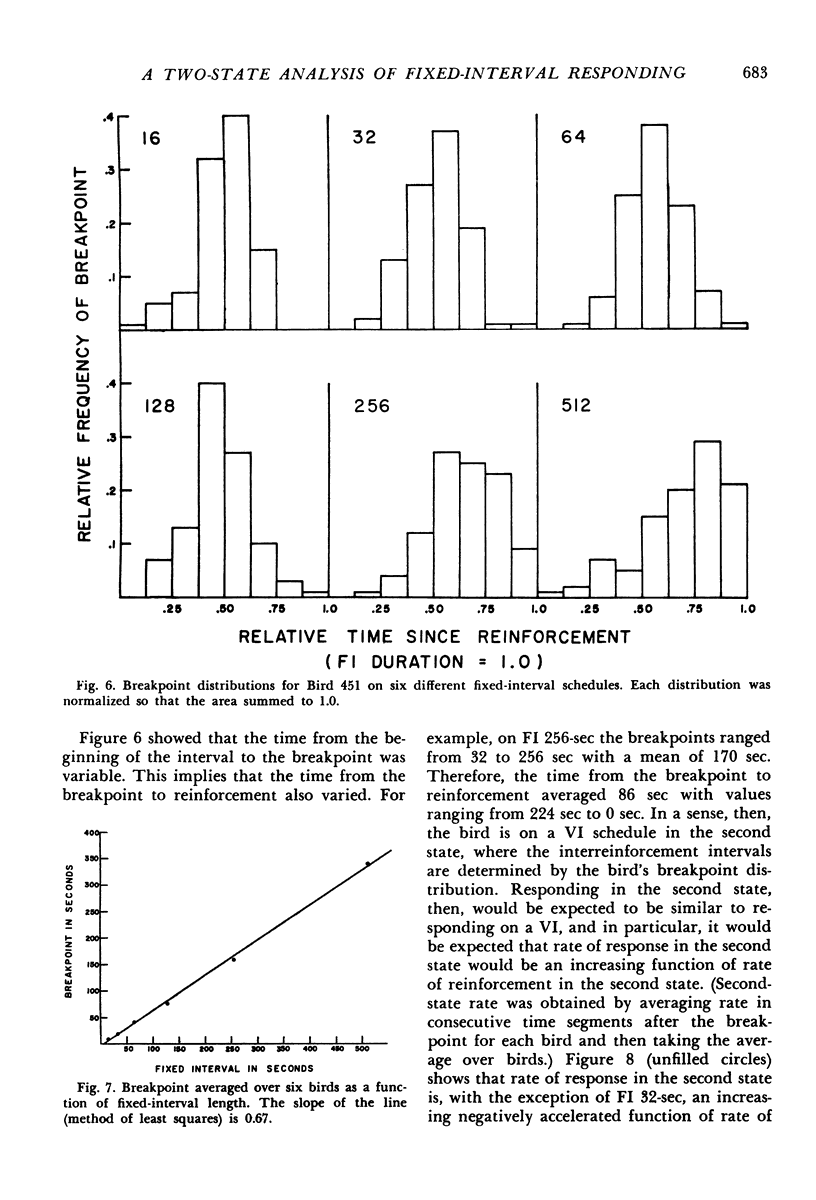
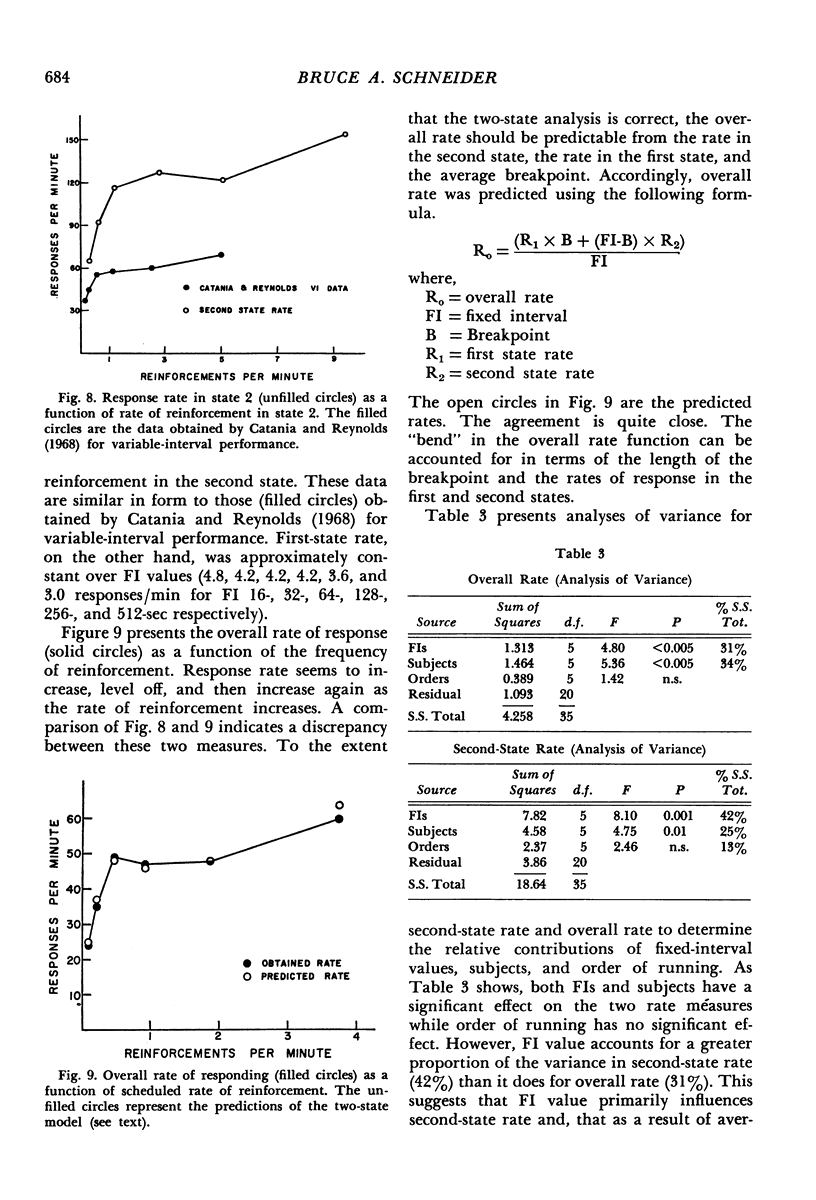

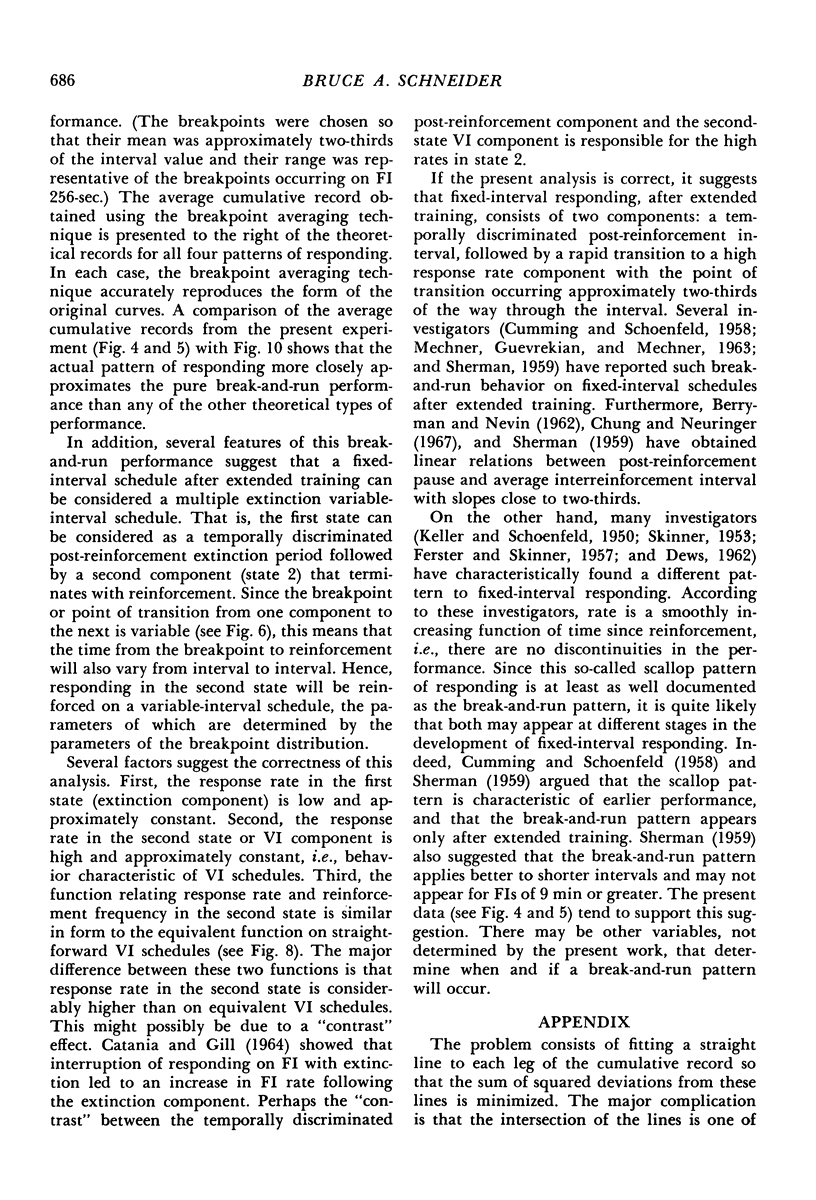

Selected References
These references are in PubMed. This may not be the complete list of references from this article.
- BERRYMAN R., NEVIN J. A. Interlocking schedules of reinforcement. J Exp Anal Behav. 1962 Apr;5:213–223. doi: 10.1901/jeab.1962.5-213. [DOI] [PMC free article] [PubMed] [Google Scholar]
- Catania A. C., Reynolds G. S. A quantitative analysis of the responding maintained by interval schedules of reinforcement. J Exp Anal Behav. 1968 May;11(3 Suppl):327–383. doi: 10.1901/jeab.1968.11-s327. [DOI] [PMC free article] [PubMed] [Google Scholar]
- Cumming W. W., Schoenfeld W. N. Behavior under extended exposure to a high-value fixed interval reinforcement schedule. J Exp Anal Behav. 1958 Aug;1(3):245–263. doi: 10.1901/jeab.1958.1-245. [DOI] [PMC free article] [PubMed] [Google Scholar]
- DEWS P. B. The effect of multiple S delta periods on responding on a fixed-interval schedule. J Exp Anal Behav. 1962 Jul;5:369–374. doi: 10.1901/jeab.1962.5-369. [DOI] [PMC free article] [PubMed] [Google Scholar]
- MECHNER F., GUEVREKIAN L., MECHNER V. A fixed interval schedule in which the interval is initiated by a response. J Exp Anal Behav. 1963 Jul;6:323–330. doi: 10.1901/jeab.1963.6-323. [DOI] [PMC free article] [PubMed] [Google Scholar]
- SIDMAN M. A note on functional relations obtained from group data. Psychol Bull. 1952 May;49(3):263–269. doi: 10.1037/h0063643. [DOI] [PubMed] [Google Scholar]
- WEISS B., MOORE E. W. Drive level as a factor in distribution of responses in fixed-interval reinforcement. J Exp Psychol. 1956 Aug;52(2):82–84. doi: 10.1037/h0045007. [DOI] [PubMed] [Google Scholar]


